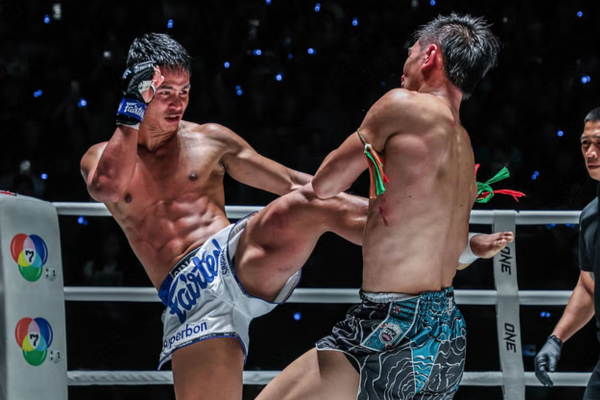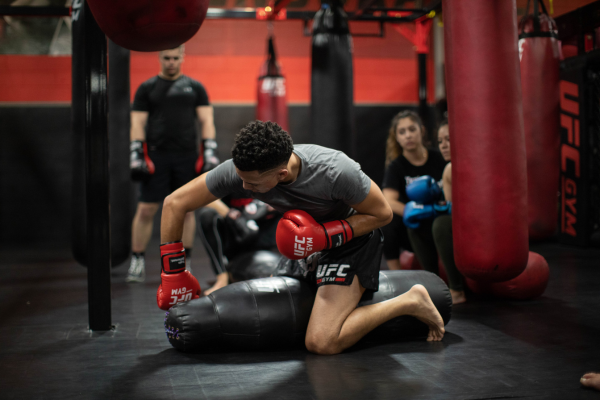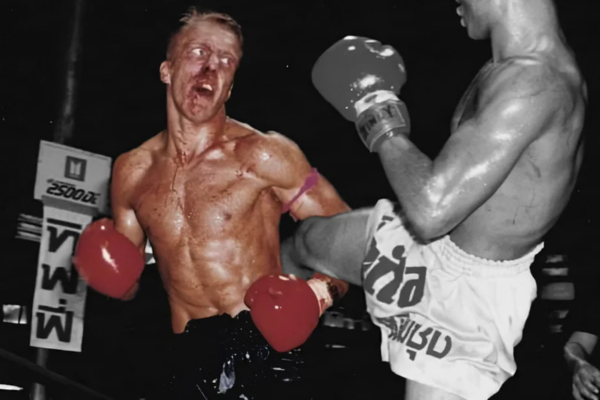The importance of rhythm and timing in Muay Thai


Muay Thai is known as the “art of eight limbs,” where punches, kicks, knees, and elbows come together in harmony. But technique alone is not enough to dominate a fight. The key to success lies in rhythm and timing. These are the hidden weapons that separate a good fighter from a grandmaster of the sport.
By feeling the right rhythm and striking at the perfect moment, you can throw your opponent off balance, neutralize attacks, and seize opening moments. But how do you develop rhythm and timing in Muay Thai? In this blog, we’ll dive deep into these crucial aspects and show you why they’re essential for every fighter.
Rhythm: The invisible flow of a fight
Rhythm in Muay Thai is like an invisible beat to which the fight is fought. A fighter with good rhythm moves fluidly, attacks at the right moment and dodges with precision. Rhythm determines the speed and tempo of a fight and helps you maintain control, both physically and mentally.
An unpredictable rhythm can confuse your opponent. By varying your speed and applying sudden accelerations, you can create opening moments and strike effectively. Many beginners make the mistake of fighting in a set pattern, which makes them predictable. The key is to find a rhythm that is fluid and unpredictable.
Developing rhythm starts with movement. Jump rope exercises, shadow boxing and padwork are excellent methods to improve your sense of rhythm. Additionally, studying top fighters helps to understand how they adjust their rhythm to maintain control.
The most important thing is to learn to listen to the fight and not just rely on reflexes. By experimenting with different tempos, you will learn how to use rhythm to your advantage and break your opponent's.
Timing: The art of the right moment
Timing in Muay Thai is the ability to strike or dodge an attack at just the right moment. A well-timed counter-punch can turn a fight around, while a well-timed defense saves your energy and discourages your opponent.
Many fighters rely on brute force, but a fighter with superior timing can neutralize this force. Think of a well-timed teep (front kick) to stop a charging opponent or a sharp elbow that lands just as your opponent is trying to throw a punch.
Timing is developed through experience and repetition. Sparring with different opponents helps you to estimate when and how someone attacks. In addition, specific exercises, such as reaction drills and simulated scenarios, can help you to react faster.
Another effective way to improve your timing is to watch fights and analyze when fighters strike or dodge. The sooner you learn to recognize when an opponent opens up, the more effective your counters will be.
The interplay between rhythm and timing
Rhythm and timing are inextricably linked. A fighter with strong rhythm but poor timing will have difficulty capitalizing on opening moments. On the other hand, someone with good timing but no rhythm will be predictable and easy to hit.
The best Muay Thai fighters know how to adjust their rhythm to perfect the timing of their attacks and defenses. They can switch between different tempos and know exactly when to surprise their opponent with a sudden attack or evasive move.
When your rhythm and timing are in tune, you become an elusive and effective fighter. You will waste less energy on useless movements and fight more efficiently. This means you will stay sharp longer in a fight and always be one step ahead of your opponent.

Common mistakes in rhythm and timing
A common mistake among beginning fighters is to get stuck in a fixed rhythm. This makes it easy for an experienced opponent to read and counter attacks. By consciously varying your speed and intensity, you can force an opponent to respond to your game.
Tension and inexperience cause many fighters to rush their attacks. This often leads to missed opportunities or counterattacks. Staying relaxed and waiting for the moment is essential to perfecting your timing.
How to improve rhythm and timing in your training
Improving rhythm and timing requires specific training. By working with structured exercises, such as reaction training and simulated combat situations, you will learn how to react instinctively to different attacks.
Training with opponents of different styles teaches you how to adjust your rhythm and timing. Fighting someone who moves fast? You need to slow down your rhythm and wait. Fighting a static fighter? You can speed up your rhythm to force opening moments.
Become a master of rhythm and timing
Muay Thai is not just about strength and technique, but more importantly about mastering rhythm and timing. A fighter who has mastered these elements can dictate a fight and always be one step ahead of his opponent.
Want to take your rhythm and timing to the next level? Make sure you work with the right equipment and training methods! Check out our range of Muay Thai gear and train like a true champion.
How do you work on your rhythm and timing during your training? Let us know in the comments!
 Nederlands
Nederlands
 English
English
 Deutsch
Deutsch



Goed uitgelegd, vinden jullie dat ritme aanleren makkelijker gaat met pads of juist tijdens sparren?
Leave a comment